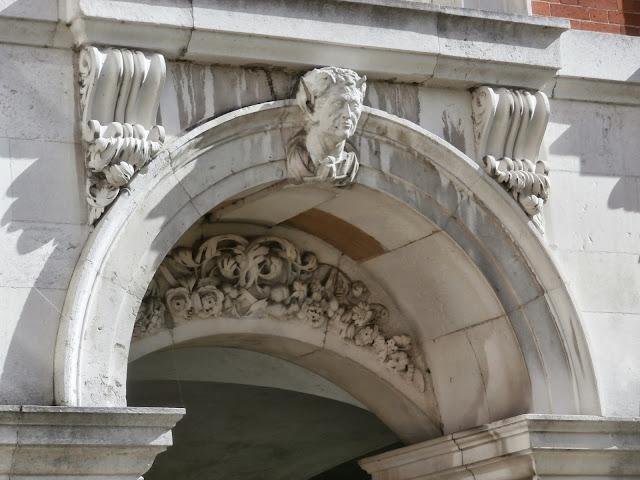Hampton Court - Photos II
This blog includes most of the photos taken on the grounds of Hampton Court. I did not visit all of the gardens because they cover over sixty acres. There are still a lot of photos to see, though. But first, a bit of history. I didn't go into as much detail with my previous post as I usually do. This Blogger app is frustrating and it takes me so long just to get the pictures in place that I really skimped on the descriptions before. So here's a condensed history to fill in the gaps.
Cardinal Wolsey bought Hampton Court in the early 1500s and set about turning it into a stunning palace. He gave it to Henry VIII in the late 1520s because he was falling out of favor with the king. The king had a massive court, so his first project was to construct the kitchens that I included in the last photo blog. His court totaled around 1000 people. That's a lot of mouths to feed. He also built the great hall, which was the last medieval style hall built for royalty. This was the king's most important room.
The prominence of Jane Seymour in much of the design is because out of Henry's six wives, she was the only one to bear him a son. His first wife, Catherine of Aragon, bore him just one surviving daughter, Mary. Henry tried to divorce Catherine on these grounds. When the Catholic Church would not permit it, Henry broke from the Church and created the Church of England. That's why Wolsey fell out of favor. He failed to get the king permission to divorce from the pope. Henry went on to marry Ann Boleyn, who gave birth to another daughter, Elizabeth. Henry later had her beheaded on trumped up charges of adultery...with her brother. Then he married Jane, who gave him Edward. She died just two weeks after giving birth, which essentially made her a saint in the king's eyes. Henry married three more times. One wife was beheaded for adultery, one marriage was annulled because the woman was uglier than her portrait indicated, and the last wife outlived Henry.

This spider web was glistening in one of the kitchen windows. I've seen a huge amount of spiders this trip. I don't know if it's because of the unusually warm weather or if this is just spider season.
There are several courtyards within the palace. This one is Fountain Court. It was designed by Christopher Wren during the reign of William and Mary, who renovated and modernized the palace in the late 17th century. The queen's apartments overlooked this court.
I rather liked the look of this fellow.
When you step out the back of the palace you gaze upon the Fountain Gardens.
The unusual trees provided lovely shade on this very sunny day.
One of the fountains that give the garden its name.
A couple of shire horses. You can take a wagon ride during the summer.
The view back toward the palace. I don't know why but I didn't take a picture toward the river.
An example of the famous English cottage garden where the aim is to carefully plan a garden that looks completely unplanned. What made me laugh is this is an English cottage garden decorating the back wall of a palace whose buildings alone cover more than six acres.
More of the pretty flowers.
I found clumps of these flowers erupting out of the grass under many of the trees.
The aptly named Lion Gate.
One of the fun parts of the palace gardens is the maze. It was commissioned by William III and completed around 1700. It was originally made of hornbeam, but was replanted with yew. It is about a third of an acre in size and is the U.K.'s oldest living hedge maze. You can go to http://www.hrp.org.uk/HamptonCourtPalace/maze to see an aerial view of the maze. This is what it looked like to me as I made my way through it. I am proud to say I made I through in just a few minutes, though I did hit a couple of dead ends.
A hint of autumn is touching some of the trees.

















Comments
Post a Comment